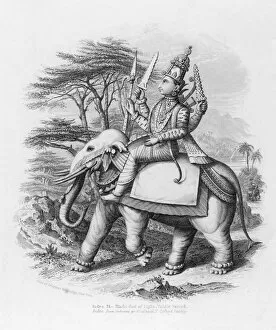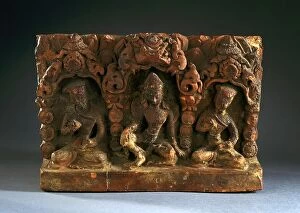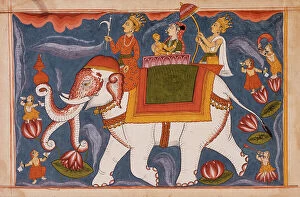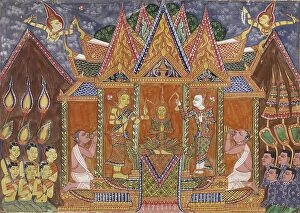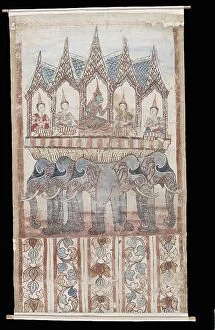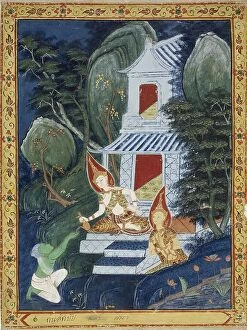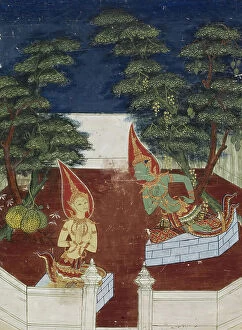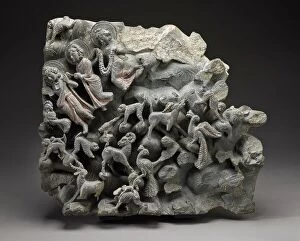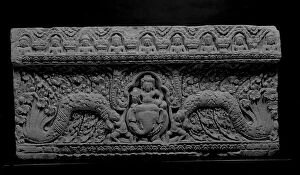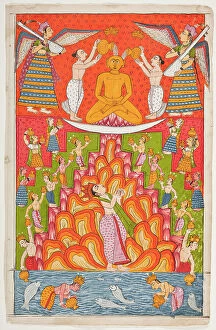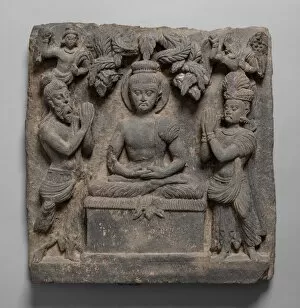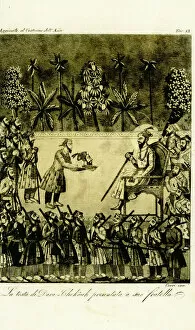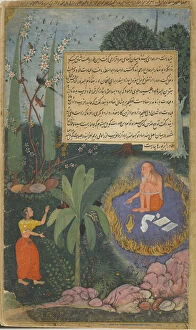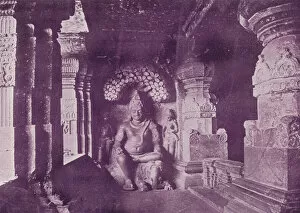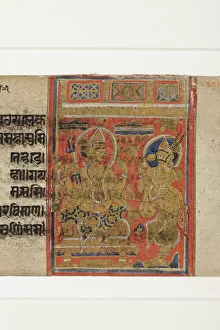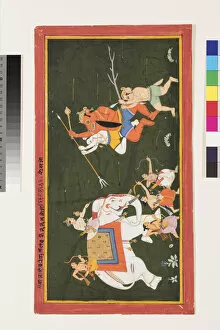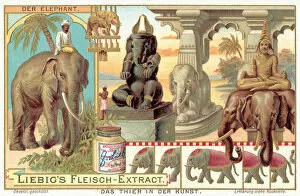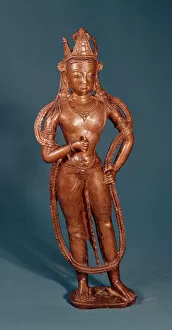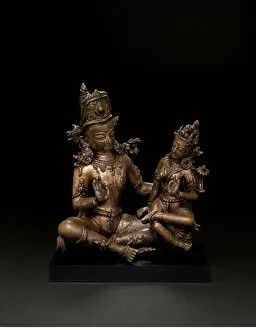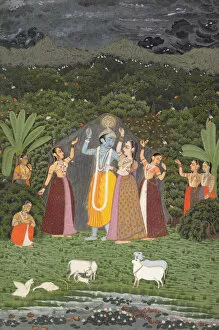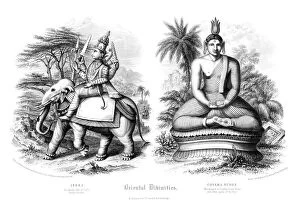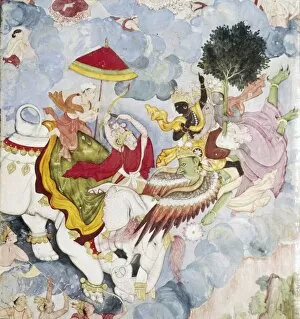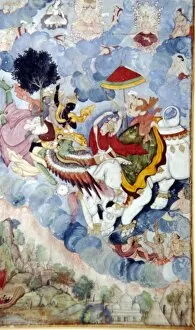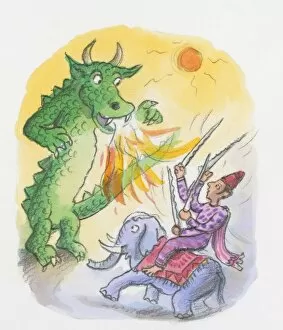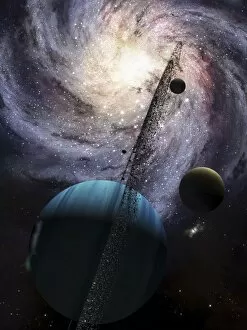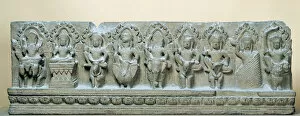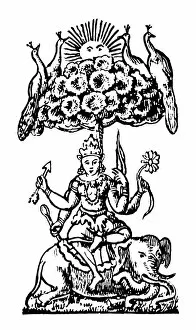Indra Collection
Indra, the mighty Hindu God, has been revered and worshipped throughout history
For sale as Licensed Images
Choose your image, Select your licence and Download the media
Indra, the mighty Hindu God, has been revered and worshipped throughout history. In the Kushan period of the 1st/2nd century, a captivating sculpture titled "Buddha Worshipped by the Gods Indra and Brahma" emerged as a testament to his divine presence. This artwork showcases Indra's devotion to Buddha, highlighting his significance in both Hinduism and Buddhism. Depictions of Oriental divinities further emphasize Indra's prominence among celestial beings. One such portrayal is seen in an engraving where he stands tall alongside other revered gods. His power and influence are undeniable, as even Dara Shukoh's head was presented to Aurangzeb in 1659 under Indra's watchful eye. In ancient scriptures like Vol. 1 fol. 61 At Indras insistence, Rambha approaches Visvamitra to distract the sage, " we witness how Indra commands others with authority for various purposes. The Ellora Caves' black and white photograph captures a figure that emanates strength and grandeur. Legends surrounding this deity continue to captivate us; one such tale tells of how he ordered Hanjhaigansesin to transfer an embryo from Kalpasutra - showcasing his involvement in significant cosmic events. Indra's valor is exemplified through vivid artistry depicting his battles against formidable foes like Vritrasura on paper adorned with opaque watercolors, ink & gold during the late 17th or early 18th century. His association with elephants is also prominent; their majestic presence symbolizes his mightiness as seen in chromolitho prints featuring these magnificent creatures alongside him. Bronze sculptures like the Ladakh or West Tibet figure from the 12th-13th century portray an intricately crafted representation of Indira - another name for Indra - displaying reverence towards this powerful god.

